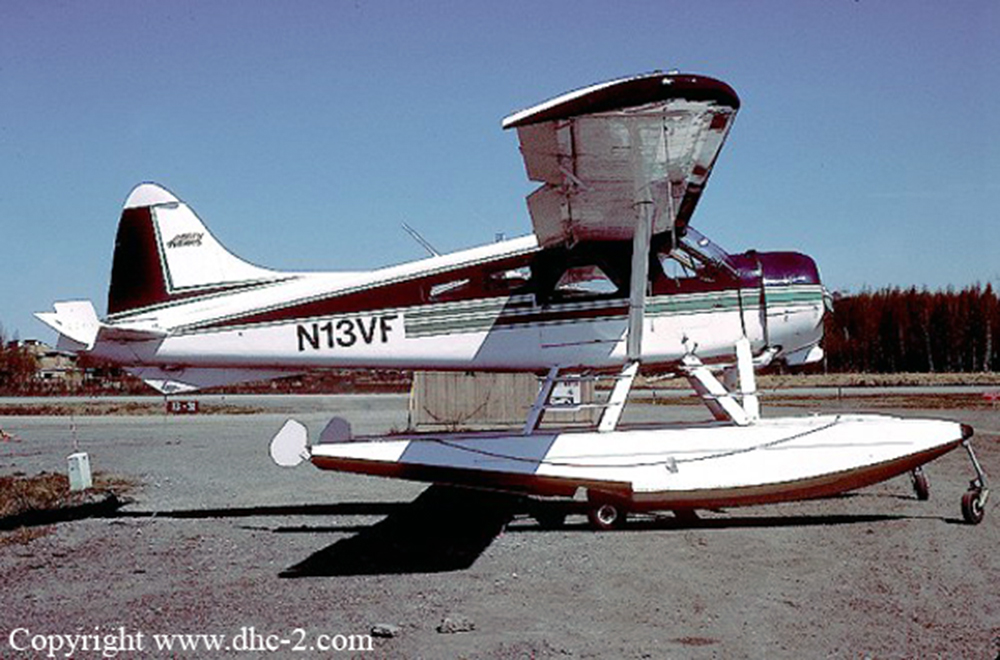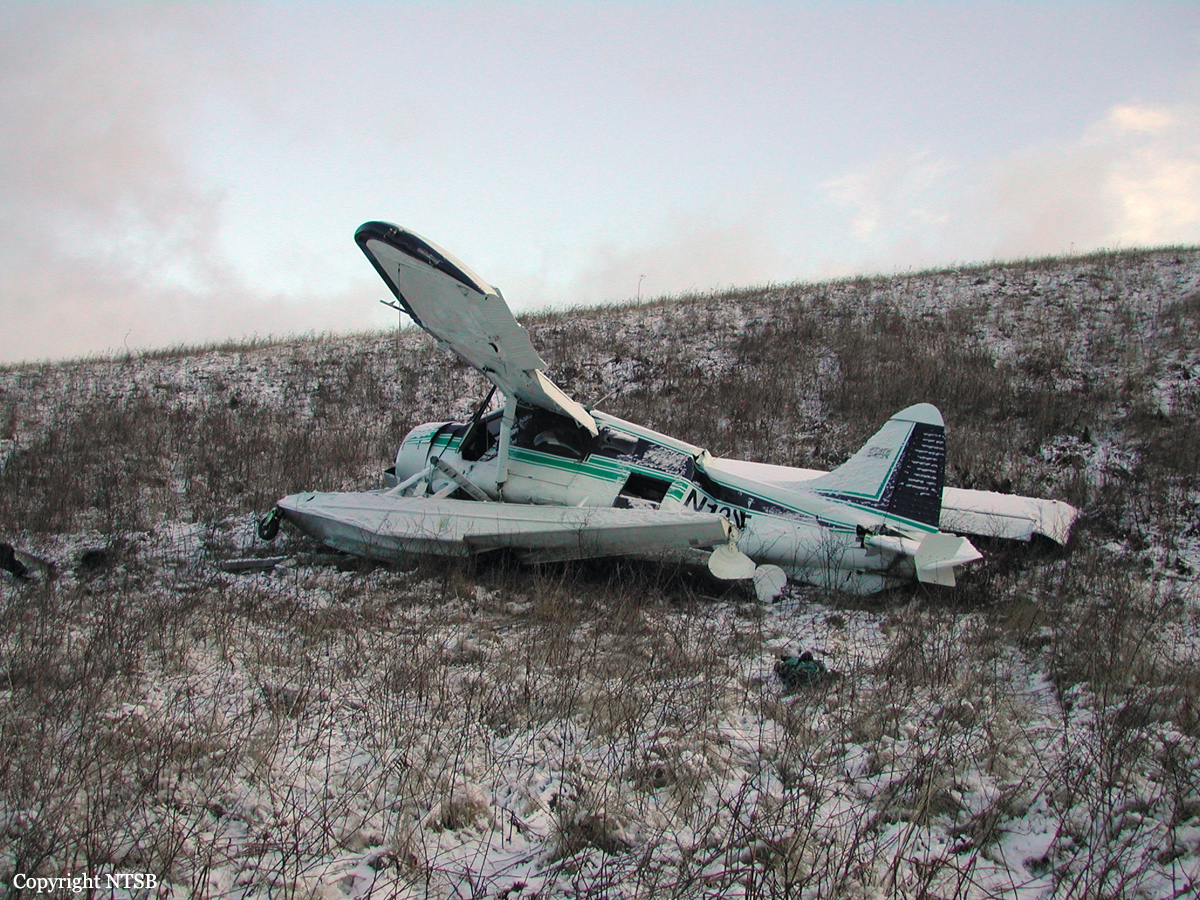Country
code
AK
Crash of a Cessna 441 Conquest in Anchorage
Date & Time:
Aug 28, 2005 at 2129 LT
Registration:
N77SA
Survivors:
Yes
Schedule:
Cordova - Anchorage
MSN:
441-0329
YOM:
1983
Crew on board:
1
Crew fatalities:
Pax on board:
1
Pax fatalities:
Other fatalities:
Total fatalities:
0
Captain / Total hours on type:
50.00
Aircraft flight hours:
11049
Circumstances:
The airline transport pilot was landing a retractable landing gear-equipped turboprop airplane on a 10,900 foot long, by 150 foot wide paved runway. According to the pilot, while on approach to land, he selected 10 degrees of wing flaps, and then selected the landing gear selector switch to the down position, which was followed by "three greens", indicating the landing gear was down, locked, and safe for landing. He said that after touchdown, during the initial landing roll, the landing gear retracted, and the airplane slid on the underside of the fuselage. The airplane veered to the right of the runway centerline, and the right wing collided with numerous runway edge lights. A post crash fire ensued when the right wing's fuel tank was breached. The airplane received structural damage to the underside of the fuselage, and the right wing was destroyed. Propeller strike marks originated in the vicinity of the accident airplane's touchdown point, and extended to the airplane's final resting point, about 2,200 feet from initial contact. A postaccident inspection of the airplane by the IIC and another NTSB air safety investigator, disclosed no evidence of any pre accident mechanical malfunction of the landing gear assembly or its associated operating systems. The airplane was placed on jack stands and hydraulic pressure was supplied to the airplane's hydraulic system using a hydraulic ground power unit. The airplane's landing gear retraction system was cycled numerous times, with no mechanical anomalies noted.
Probable cause:
The pilot's failure to lower the airplane's landing gear during landing, which resulted in an inadvertent wheels up landing.
Final Report:
Crash of a Cessna T207 Turbo Skywagon on West Amatuli Island: 3 killed
Date & Time:
Jul 1, 2005 at 1200 LT
Registration:
N1621U
Survivors:
No
Schedule:
Homer - Homer
MSN:
207-0221
YOM:
1973
Crew on board:
1
Crew fatalities:
Pax on board:
2
Pax fatalities:
Other fatalities:
Total fatalities:
3
Aircraft flight hours:
7416
Circumstances:
The airline transport certificated pilot and the two pilot-rated passengers traveled to Alaska for a Title 14, CFR Part 91 personal flying vacation. The pilot received a VFR check-out in a rented airplane, and was the only person authorized by its owner to fly it. The pilot obtained a weather briefing for the day of the accident flight, and queried an FAA automated flight service station (AFSS) specialist about VFR conditions for a sightseeing flight. The FSS specialist stated, in part, "Well, it doesn't really look good probably anywhere today..." The area forecast included areas of marginal VFR and IFR conditions, and an AIRMET for mountain obscuration. The cloud and sky conditions included scattered clouds at 1,500 feet in light rain showers, with areas of isolated ceilings below 1,000 feet, and visibility below 3 statute miles in rain showers and mist. The weather briefing included a report from a pilot who was about 23 miles north of the accident scene about 2 hours before the accident airplane departed. The pilot reported fog and mist to the water, and said he was unable to maintain VFR. Five minutes after receiving the weather briefing, the accident pilot again called the AFSS and requested the telephone number to an automated weather observing system, located south of the point of departure, where VFR conditions were forecast. Local fishing charter captains reported fog in the area of the islands where the accident occurred. One vessel captain reported hearing an airplane in the vicinity of the islands, but could not see it because of the fog. The pilot did not file a flight plan, nor did he indicate any planned itinerary. The airplane was reported overdue two days after departure. The accident wreckage was located an additional two days later on the north cliff face of a remote island. The airplane had collided with the island at high speed, about 800 feet mean sea level, and a post crash fire had incinerated the cockpit and cabin area.
Probable cause:
The pilot's continued VFR flight into instrument meteorological conditions, which resulted in an in-flight collision with an island cliff during cruise flight. A factor contributing to the accident was fog in the area of the accident.
Final Report:
Crash of a Britten-Norman BN-2A-8 Islander in Hallo Bay
Date & Time:
Sep 23, 2004 at 1100 LT
Registration:
N6522T
Survivors:
Yes
Schedule:
Hallo Bay - Homer
MSN:
136
YOM:
1970
Crew on board:
1
Crew fatalities:
Pax on board:
6
Pax fatalities:
Other fatalities:
Total fatalities:
0
Captain / Total hours on type:
300.00
Aircraft flight hours:
16473
Circumstances:
The commercial certificated pilot, with six passengers, was departing from a remote beach in a twin-engine airplane on an on-demand air taxi flight. The beach was oriented north/south, and was utilized by airplanes transporting guests to and from a remote wilderness lodge. Weather conditions at the beach were reported to air taxi operators via satellite phone. The pilot reported that as he was departing toward the north, the wind was from the west about 30 knots, with gusts to 50 knots. About 20 feet agl, a strong gust of wind, or a downdraft, hit the airplane. The airplane descended and the left wing collided with the beach, which spun the airplane 180 degrees. The airplane came to rest in about 2 1/2 feet of water.
Probable cause:
The pilot's inadequate compensation for wind conditions, and his intentional flight into adverse weather conditions, which resulted in a loss of control and collision with terrain during takeoff-initial climb. Factors contributing to the accident were high and gusty wind conditions, and the pilot's inadequate preflight planning.
Final Report:

Crash of a De Havilland DHC-2 Beaver near Sitka: 5 killed
Date & Time:
Sep 20, 2004 at 1115 LT
Registration:
N712TS
Survivors:
No
Schedule:
Sitka - Warm Spring Bay
MSN:
948
YOM:
1956
Crew on board:
1
Crew fatalities:
Pax on board:
4
Pax fatalities:
Other fatalities:
Total fatalities:
5
Captain / Total hours on type:
500.00
Aircraft flight hours:
16155
Circumstances:
The commercial certificated pilot, with four passengers, departed for a remote lodge on an on-demand air taxi flight in an amphibious float-equipped airplane. The airplane was the second of two company airplanes to depart for the lodge. The route of flight would have transited around the north end, from the west side to the east side of a large island. The first company airplane completed the flight, but the accident airplane did not arrive at the lodge, and was reported overdue. Throughout the morning, before the accident flight, the pilot received two telephonic weather briefings from the local FAA flight service station, which included an AIRMET for mountain obscuration, and two pilot reports from the first pilot. In addition, the pilot visited the FSS for another weather briefing. The weather conditions along the route of flight had reported visibilities as low as 2 miles, and ceilings as low as 200 feet due to rain and mist, and wind of 35 to 40 knots. The area of the accident flight is characterized by steep mountainous island terrain, numerous ocean channels, and an extensive shoreline, containing small coves and bays. The area frequently has low ceilings and reduced visibility due to rain, fog, and mist. The island is one of several barrier islands between the north Pacific Ocean and mainland Alaska. The western coastal portion of the island is exposed to open ocean. The eastern coastal portion of the island is adjacent to a wide strait, which separates the island from several inner islands. The area of operations for the accident airplane has no low-level radar coverage, intermittent radio communications, and limited weather reporting capability. The company's operations manual states that aircraft may not be released for a flight at any location unless there is agreement about the parameters of the flight with the pilot-in-command, and any of the following: Director of operations; chief pilot; or trained individuals granted the authority by the director of operations. The airplane has been declared missing, and is presumed to have crashed; the occupants are presumed to have received fatal injuries.
Probable cause:
Reason for occurrence is undetermined. The airplane is missing.
Final Report:

Crash of a De Havilland DHC-3 Otter near McGrath: 1 killed
Date & Time:
Aug 27, 2004 at 1600 LT
Registration:
N197TT
Survivors:
Yes
Schedule:
Kenai – McGrath – Kotzebue
MSN:
197
YOM:
1957
Crew on board:
2
Crew fatalities:
Pax on board:
1
Pax fatalities:
Other fatalities:
Total fatalities:
1
Circumstances:
The airline transport certificated pilot was conducting a VFR cross-country business flight, transporting cargo and personnel to a remote airport. The accident airplane was one of two airplanes transporting supplies for a hunting/fishing company, traveling a multi-segment route. The pilot was accompanied by a pilot-rated passenger occupying the right front seat, and a second passenger seated behind the pilot. The pilot obtained a weather briefing from the FAA, which included AIRMETs for mountain obscuration, and IFR conditions due to low ceilings and visibility in smoke, light rain and mist. The pilot said that when he took off on the accident flight, the visibility was 1 to 3 miles in smoke, haze, and fog, but was VFR. He recalled hazy conditions in which he could see rolling hills and river cuts. The pilot-rated passenger was initially flying the airplane. Upon entering lowering visibility, the pilot said he reassumed control of the airplane, and attempted a 180 degree turn to clear the low visibility area, but collided with trees and crashed. The rear seat passenger reported that the accident airplane was flying about 500 to 1,000 feet above the ground because of smoke and fog. He estimated the visibility at takeoff was about 1 mile. About 30 minutes after departure, the airplane was flying over mountainous terrain, and appeared to be following a canyon. The passenger said that the visibility decreased due to fog. He said that the airplane's throw-over control yoke was initially positioned in front of the right seat, pilot-rated passenger, when suddenly a mountain ridge appeared in front of the airplane. The pilot repositioned the control yoke in front of the left seat, banked the airplane to the left, and added engine power. Within a few seconds, the passenger indicated that he felt the airplane collide with several trees and then descend to the ground. The airplane came to rest upright with extensive fuselage damage, about 1,400 feet msl. One wing was torn off the airframe. A postcrash fire consumed the wreckage. A terminal forecast for the airport of departure included few clouds at 500 feet, and visibilities as low as 3 miles in smoke and mist. The destination airport for the accident flight segment had few clouds at 100 feet, and visibilities as low as 2 1/2 miles.
Probable cause:
The pilot's inadequate in-flight planning/decision making, his continued VFR flight into instrument meteorological conditions, and his failure to maintain obstacle clearance. Factors contributing to the accident were low ceilings due to smoke, rain, and mist.
Final Report:

Crash of a Beechcraft C-45H Expeditor in Kodiak: 1 killed
Date & Time:
Jun 14, 2004 at 1137 LT
Registration:
N401CK
Survivors:
No
Schedule:
Anchorage – Kodiak
MSN:
AF-60
YOM:
1952
Crew on board:
1
Crew fatalities:
Pax on board:
0
Pax fatalities:
Other fatalities:
Total fatalities:
1
Circumstances:
The solo airline transport pilot departed on a commercial cargo flight in a twin-engine, turboprop airplane. As the flight approached the destination airport, visibility decreased below the 2 mile minimum required for the initiation of the approach. The pilot entered a holding pattern, and waited for the weather to improve. After holding for about 45 minutes, the ceiling and visibility had improved, and the flight was cleared for the ILS 25 instrument approach. After the pilot's initial contact with ATCT personnel, no further radio communications were received. When the flight did not reach the destination airport, it was reported overdue. A search in the area of an ELT signal located the accident airplane on a hilly, tree-covered island. A witness located to the north of the airport reported seeing a twin-engine turboprop airplane flying very low over the water, headed in an easterly direction, away from the airport. The witness added that the weather at the time consisted of very low clouds, fog, and rain, with zero-zero visibility. A local resident also stated that the weather conditions were often much lower over the water adjacent to the approach end of the airport than at the airport itself. The missed approach procedure for the ILS 25 approach is a climbing left turn to the south. About one minute after the accident, a special weather observation was reporting, in part: Wind, 060 degrees (true) at 11 knots; visibility, 2 statute miles in light rain and mist; clouds and sky condition, 500 feet broken, 900 feet broken, 1,500 feet overcast; temperature, 46 degrees F; dew point, 44 degrees F. According to FAA records, the company was not authorized to conduct single pilot IFR operations in the accident airplane, and that the accident pilot was the operator's chief pilot. Toxicology tests revealed cocaethylene and chlorpheniramine in the pilot's blood and urine.
Probable cause:
The pilot's failure to follow proper IFR procedures by not adhering to the published missed approach procedures, which resulted in an in-flight collision with tree-covered terrain. Factors contributing to the accident were a low ceiling, fog, rain, and the insufficient operating standards of company management by allowing unauthorized single pilot instrument flight operations. Additional factors were the pilot's impairment from cocaine, alcohol, and over the counter cold medication, and the FAA's inadequate medical certification of the pilot and follow-up of his known substance abuse problems.
Final Report:

Ground explosion of a Douglas C-54B-1-DC Skymaster in Ganes Creek
Date & Time:
May 7, 2004 at 2130 LT
Registration:
N44911
Survivors:
Yes
Schedule:
Ganes Creek – Fairbanks
MSN:
10461
YOM:
1945
Crew on board:
2
Crew fatalities:
Pax on board:
0
Pax fatalities:
Other fatalities:
Total fatalities:
0
Captain / Total hours on type:
5630.00
Copilot / Total hours on type:
1560
Aircraft flight hours:
29667
Circumstances:
The crew of the 4 engine airplane started its engines for a positioning flight from a remote mining airstrip. Following the startup of the engines, an explosion occurred in the left wing area aft of the number 1 engine firewall and number 1 auxiliary fuel tank. The airplane was parked next to the mine's fuel storage tank, and the pilot added power on the remaining engines to move away from the storage tank. Within seconds of beginning to move, the number 1 engine fell off the burning wing, followed by separation and aft folding of the outboard end of the left wing. The outboard end of the wing, however, was still attached via control cables. The pilot taxied the airplane about 200 feet, dragging the partially burning left wing segment to a pond of water and shut down the remaining engines. The crew evacuated with no injuries. Water was applied to the airplane until the fire was extinguished, about 3 1/2 hours later. NTSB and FAA personnel did not travel to the scene, and the airplane was not recovered from the mining strip. The airplane's left wing powerplant and fuel system consists of the number 1 and 2 engines. Each engine is separated from the wing by a firewall. Within the wing, from outboard to inboard, the fuel tank system consists of the number 1 fuel tank, the left wing auxiliary fuel tank, and the number 2 fuel tank. Each wet-wing type fuel tank contains a submerged electrical boost pump, sump drain valves and fuel quantity transmitters. The fuel system has selector valves, crossfeed valves, and shut-off valves for each tank. An FAA inspector examined portions of the airplane that the operator supplied. The inspector examined a portion of the upper wing surface that had been blown away from the airplane during the initial explosion. He noted that the inside of the upper wing surface, normally positioned over the auxiliary tank, was not charred or sooted. A separated portion of the lower wing surface, near the auxiliary boost pump, was sooted and charred. The aft side of the number 1 engine firewall was not charred. A portion of the number 1 engine nacelle was oily, but not sooted or charred. The operator located the auxiliary in-tank boost pump and sent it to the FAA. The boost pump impeller, encased in a small wire cage, was not melted and could be turned by hand. The body of the pump was sooted but not thermally damaged. Its wire connectors and one fuel line were melted. A smaller line, what appeared to be a return line, was not melted.
Probable cause:
A fuel tank explosion in the left wing auxiliary fuel tank, and subsequent fuel fire that occurred during engine start for an undetermined reason.
Final Report:
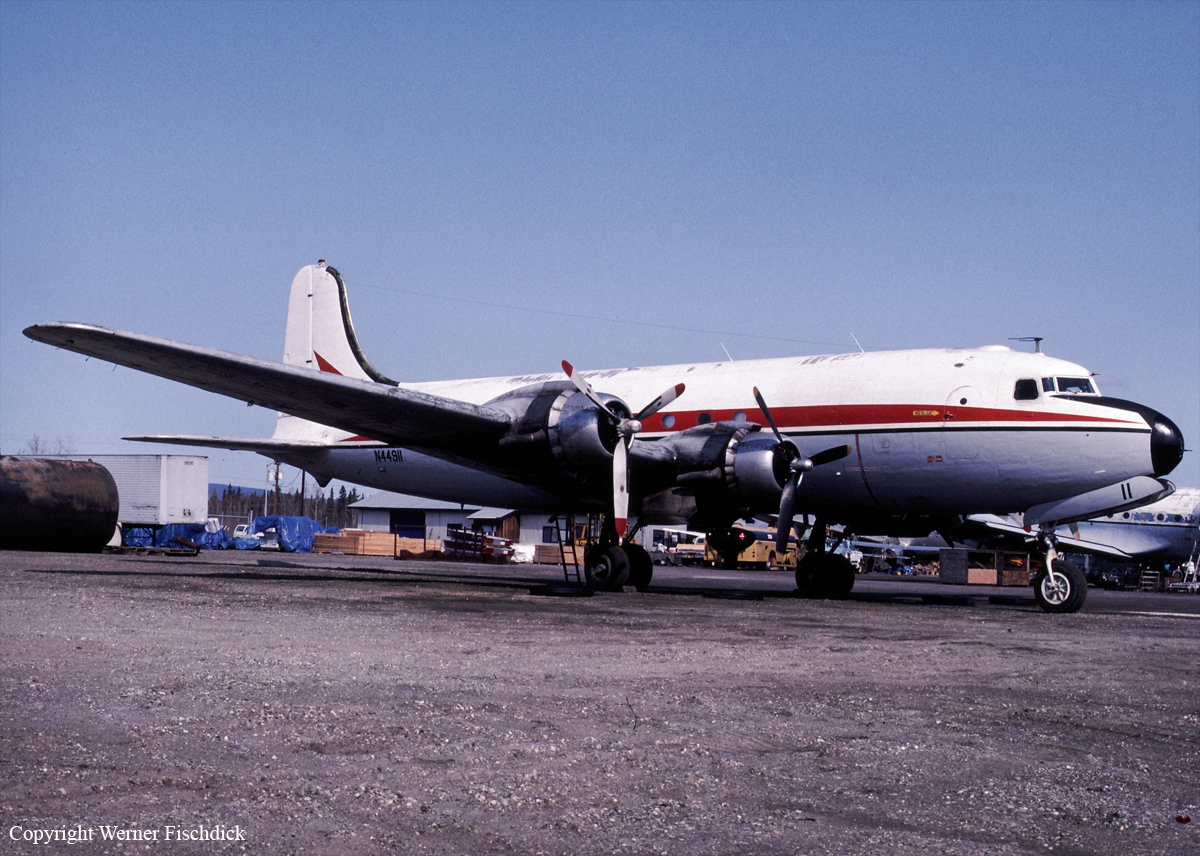
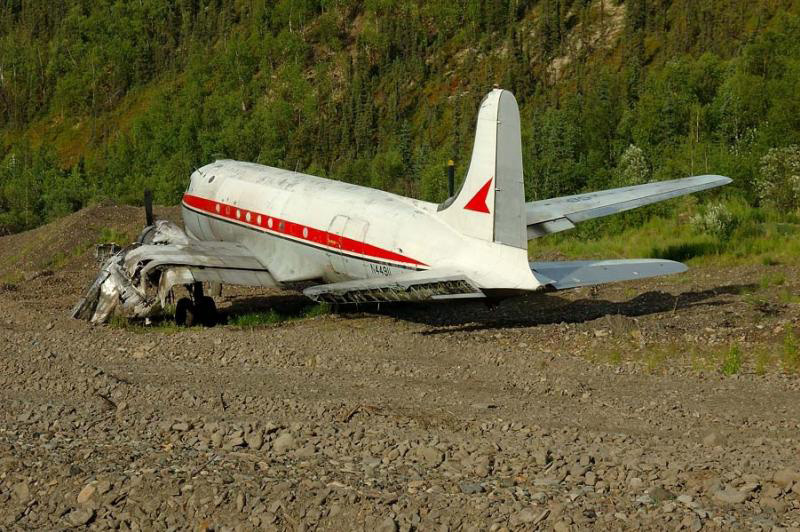
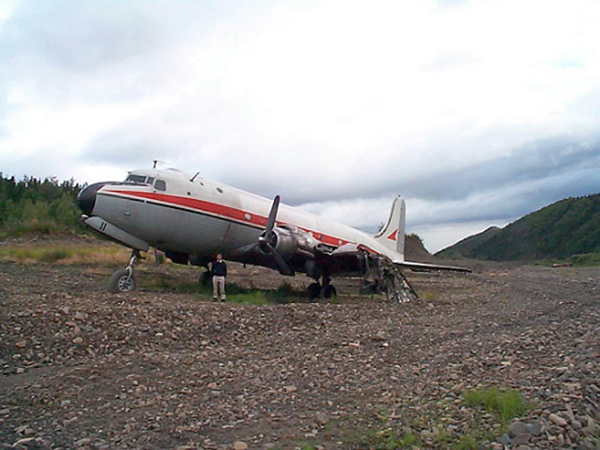
Crash of a Piper PA-31-350 Navajo Chieftain in Koyukuk
Date & Time:
Jan 2, 2004 at 1630 LT
Registration:
N45008
Survivors:
Yes
Schedule:
Galena – Koyukuk
MSN:
31-8052167
YOM:
1980
Crew on board:
1
Crew fatalities:
Pax on board:
0
Pax fatalities:
Other fatalities:
Total fatalities:
0
Captain / Total hours on type:
1400.00
Aircraft flight hours:
12808
Circumstances:
The Title 14, CFR Part 135 cargo flight departed for a destination airport about 20 miles downriver. Although weather at the departure airport was VFR, no reports of the actual weather along the route of flight were available. Unable to locate the destination airport due to deteriorating weather conditions, the pilot attempted to return to the departure airport following the river for ground reference. The airplane entered fog and whiteout weather conditions, and collided in-flight with the frozen surface of the river.
Probable cause:
The pilot's continued flight into adverse weather conditions, and his failure to maintain clearance from terrain, which resulted in an in-flight collision with terrain. Factors associated with the accident were fog and whiteout weather conditions.
Final Report:
Crash of a De Havilland DHC-2 Beaver in Viekoda Bay
Date & Time:
Nov 29, 2003 at 0935 LT
Registration:
N13VF
Survivors:
Yes
Schedule:
Kodiak – Viekoda Bay
MSN:
1613
YOM:
1965
Crew on board:
1
Crew fatalities:
Pax on board:
2
Pax fatalities:
Other fatalities:
Total fatalities:
0
Captain / Total hours on type:
3100.00
Aircraft flight hours:
14953
Circumstances:
During an on-demand air taxi flight, the airline transport certificated pilot was preparing to land an amphibious float-equipped airplane near a cabin that was located on the shore of a coastal bay. A 10 to 15 knot wind was blowing from the bay toward the land, and the pilot decided to approach over land. As the airplane descended over a small creek bed, adjacent to a hill, the airplane encountered a downdraft, and descended rapidly. The left wing collided with alder trees which spun the airplane 180 degrees. The right wing and float assembly were torn off the airplane. The closest official weather observation station, located 30 miles away, was reporting calm wind.
Probable cause:
The pilot's inadequate evaluation of the weather conditions, and his failure to maintain adequate altitude/clearance, which resulted in a collision with terrain during the final landing approach. A factor contributing to the accident was the presence of a downdraft.
Final Report:
